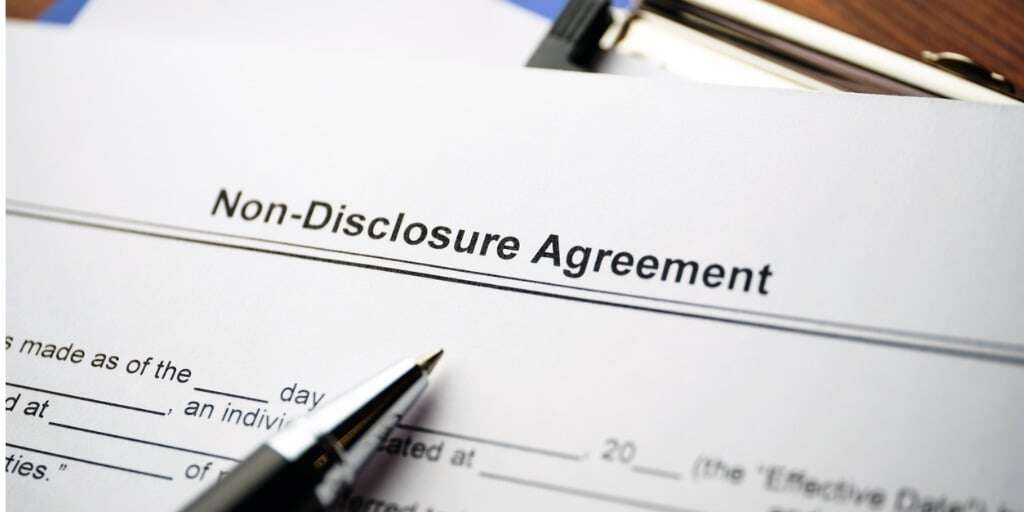
3 Non Disclosure Agreement Electronic Signature Best Practices
The use of electronic signatures has become increasingly popular amongst businesses today. As a result of the Uniform Electronic Transactions Act (UETA) and the Electronic Signature in Global and National Commerce (ESIGN) Act, electronic signatures are widely used for contract signing including non disclosure agreements (NDAs) in the United States. Companies use NDAs to protect confidential data when exchanging information with partners, clients, and customers. These agreements specify that certain information should not be disclosed. Electronic signatures make it easy to quickly execute and sign NDAs. Read on to learn some best practices for using electronic signatures for NDAs.
What is a Non Disclosure Agreement?
A non disclosure agreement (NDA) is a legally binding contract between two or more parties. The purpose of an NDA is to protect confidential information from being divulged. Information covered by an NDA could be anything from business secrets to sensitive personal information. An NDA typically outlines what information can and cannot be shared and the consequences of breaching the agreement.
How are NDAs used and what does signing one mean?
NDAs are commonly used in business relationships, such as when two companies consider entering into a joint venture. They are also used in employment contracts to protect an employer's trade secrets. Often, NDAs are used to ensure the privacy of sensitive information, such as in non-compete agreements.
Organizations use NDAs whenever confidential information is shared between two or more parties. For example, a company may use an NDA when sharing confidential financial information or intellectual property with a potential business partner.
By signing an NDA agreement, both parties agree that sensitive information obtained will not be disclosed.
The ESIGN Act, UETA, and Non Disclosure Agreement Electronic Signatures
Both parties need to sign the NDA for it to be legally binding. In the past, this process has been accomplished by printing out the document, signing it, scanning it, and then emailing it back. However, with the rise of electronic signatures, legislation allows businesses to enact NDAs without the need for handwritten signatures.
The ESIGN Act and the UETA define the legality of electronic signatures in the United States. Due to these laws, a contract, such as an NDA cannot be declared invalid for being electronically signed.
Generally, the following 4 conditions must be met for electronic signature compliance for NDAs and other agreements under these laws.
- Intent to sign - There needs to be authorization from the signers to sign.
- Consent - The signing parties must agree that they will conduct business electronically.
- Association of signature with record - During transmission and storage, the electronic signature must be attached to the document being executed.
- Record retention - There must be valid records of the electronic signatures that are easily obtained.
Non Disclosure Agreement Electronic Signature Best Practices for All Industries
There are a few best practices to keep in mind with NDAs.
Make sure the NDA is signed before sharing sensitive information.
The first non disclosure agreement electronic signature tip we have may seem obvious—make sure that both parties have signed the NDA before any confidential information is shared. This way, if there is ever a dispute about what was disclosed and when you disclosed it, you will have a record of when the other party signed the agreement.
Develop a standard NDA template for your organization.
Having a standard NDA template will save your business time in the long run, as you won't have to start from scratch each time you need to create an agreement. Ensure all the necessary information is included in your templates, such as the parties involved, the confidential information that each party cannot share, and the consequences of breaching the agreement. Work alongside your organization's legal team to develop a template that works best for your industry.
In some electronic signature software, documents that are frequently signed can be templated. Your standard template can then be uploaded into electronic signature software and used as a signing template. This allows your business to easily and quickly send the same NDA document by changing out a few details.
Set up a Self-Initiated NDA.
If numerous people are going to sign your NDA, create a link to your standard template document using electronic signature software. This link can be emailed or embedded on your website, allowing signers to self-initiate and sign the NDA. This can be a huge time saver eliminating manual work and helping your business get NDAs signed quickly.
How to Make the Switch to Using Electronic Signature NDAs
Giving your organization the option to use non disclosure agreement electronic signatures is a smart way to save time and keep your business moving forward.
ReadySign is an affordable electronic signature software that has been helping organizations of all sizes send, store, and sign contracts such as NDAs. Unlike other electronic signature software on the market, with ReadySign you pay one price for all of our features including custom templates and forms, and AnySign link signing. We are also built in accordance with both the United States Electronic Signatures in Global and National Commerce Act (ESIGN) and the Uniform Electronic Transactions Act (UETA). To learn more, schedule a demo of ReadySign today.
Please note that this blog post is for informational purposes only and does not constitute legal advice. If you have questions about electronic signatures or NDAs, please consult your organization's legal team


